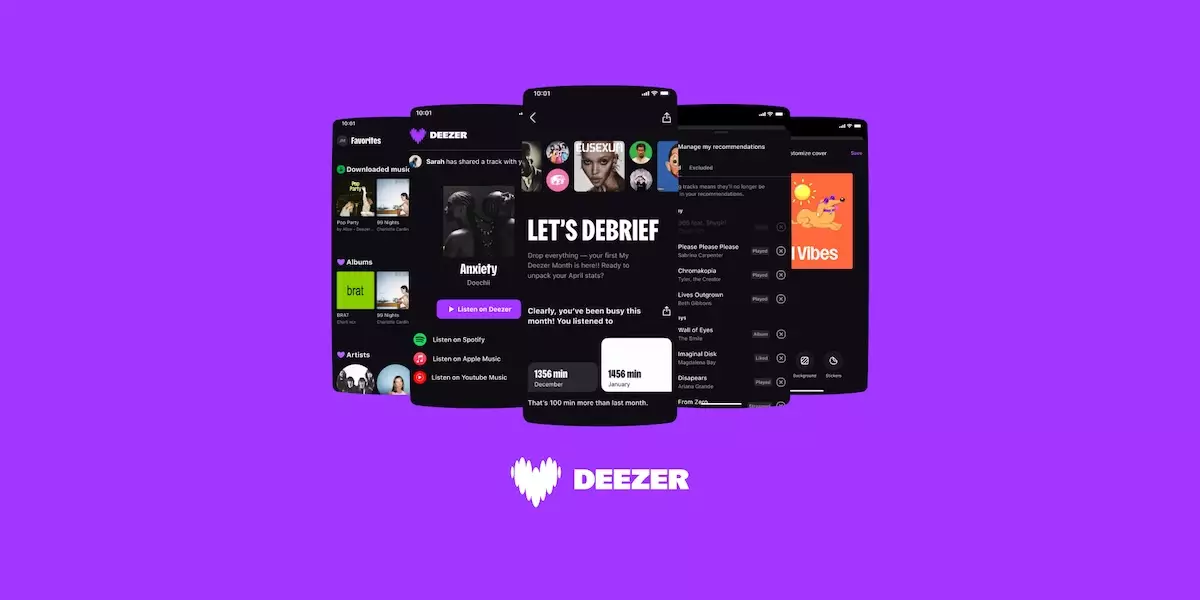Deezer, a stalwart in the music streaming industry, recently marked a significant achievement by reporting its first positive cash flow in 2024. This milestone not only demonstrates the platform’s financial resilience but also signals a critical turning point in its prolonged journey towards profitability. In an era where competition is fiercer than ever, Deezer’s concerted efforts to innovate and enhance user experience are commendable—yet they come with their own set of challenges. The introduction of new features designed to enrich user interaction marks a bold strategy that aims to distinguish the platform from heavyweights like Spotify and Apple Music.
Personalization: The Heart of Deezer’s Strategy
One of the most striking elements of Deezer’s latest offerings is its customizable algorithm, which is being positioned as a game-changer for user recommendations. Unlike its competitors, which offer simple options to dislike or hide songs, Deezer empowers its users to have granular control over their listening experience. The introduction of the “Manage My Recommendations” section allows users to completely exclude specific songs, artists, or even entire playlists from their suggestions. This revolutionary approach not only democratizes music discovery but also hands control back to the listener—a move that could potentially enhance user loyalty and engagement.
Furthermore, the addition of a “dislike” button alongside the existing “like” feature is a thoughtful development that recognizes the nuanced preferences of modern listeners. By enabling users to communicate disinterest more explicitly, Deezer enhances the efficacy of its algorithm, ensuring that recommendations are more reflective of individual tastes.
Creating a Deeper Connection: Monthly Recaps and Customization
Deezer isn’t just stopping at recommendation control; the rollout of features like “My Deezer Month” offers users a more comprehensive view of their listening habits. While Spotify has long dominated yearly recaps, Deezer’s monthly breakdowns provide an intimate look at listener activity. This granular approach not only makes a case for increased user engagement but also appeals to the competitive spirit of music aficionados who thrive on metrics and analysis of their musical journey. Understanding their own habits, users can appreciate the context of their listening patterns—allowing for a greater emotional connection with the platform.
In tandem with this personalized data, the options to customize playlist covers with colors and stickers add a playful element to music organization. By allowing users to prioritize favorite albums and artists for easy access, Deezer is wise to tap into the psychology of ownership and personalization. These features don’t just adorn the user interface; they foster a sense of belonging and creativity among an audience that increasingly values individuality.
Universal Sharing: Bridging the Gap
In addition to personalization, Deezer’s introduction of a universal sharing feature reflects a strategic pivot to inclusivity. In a landscape where artists often have a presence across various platforms, allowing songs to link to Spotify and Apple Music may initially seem counterintuitive. However, this thoughtful approach expands Deezer’s reach, enabling users without accounts to connect with the music and artists they love, regardless of the service they typically use. This bridges the gap between different streaming platforms, showcasing Deezer’s commitment to music as a unifying force.
The launch of this universal sharing feature in late April complements Deezer’s broader vision. By emphasizing accessibility, the platform can leverage social interactions to bolster user acquisition—potentially transforming casual listeners into dedicated subscribers.
The Road Ahead: Challenges and Opportunities
Despite these significant innovations, Deezer faces inherent challenges. A slight decline in subscribers from 10 million to 9.7 million this year raises questions about retention strategies and user satisfaction in a crowded market. While Deezer’s renewed focus on features designed to enhance the user experience is commendable, translating this innovation into tangible user growth will be critical.
As other platforms like Spotify continue to amass soaring user bases—boasting 675 million monthly active users—Deezer must ensure that its innovative spirit translates into both user engagement and subscriber growth. Navigating the balance between exciting new offerings and fostering a loyal listener base will be crucial as the music streaming landscape evolves.
Deezer’s journey towards profitability may have taken a significant step forward, but the road to becoming a leading player in the industry is still long, filled with both opportunities and obstacles. The question is: will Deezer’s bold innovations resonate enough with users to solidify its place in the competitive streaming market?

